Select Your City
Molly stark sanatorium.
Something about abandoned hospitals and asylums truly chills to the bone, the knowing of the lives lost and the illness experienced leaves a bad taste in anyone’s mouth, as well as a negative imprint on the physical land. Molly Stark Sanatorium is a perfect example of this — an overgrown cement behemoth, overtaken by various ivy and other creeping flora.
Most asylums of the past were constructed in a way to allow nature to coexist with patients, as the belief was held that sunlight and fresh air were necessary for patient recovery. Surely they didn’t plan for nature to drown out almost all evidence of human involvement.

Molly Stark Sanatorium’s History
Molly Stark Sanatorium is a former tuberculosis hospital located in Stark County, Ohio. It was named after the wife of General John Stark and was constructed to house the growing number of tuberculosis patients in the area.
Stark County began to prepare for a tuberculosis hospital after it sold its interest in the Springfield Lake Tuberculosis Sanatorium in Summit County, Ohio. A $750,000 bond was issued for the construction, passed by local voters in 1927. Plans for a 150-bed asylum were set into motion after it was approved by the state commission on April 27th, 1927.
The disarray of the asylum is evident in any photo. Source: US Ghost Adventures
A view of the sanatorium from the Children’s Hospital lawn. Source: US Ghost Adventures
Bedridden patients in need of specialized care were sent to the upper floor. As their health improved, they were transferred one floor lower until they reached the ground level. The lowest-floor patients were allowed to roam the grounds. The second floor contained a large assembly room that allowed for gathering and had a library, radios, and even a game room.
The hospital was given additional and expanded east and west wings to accommodate more patients, and its capacity increased from 128 to 230. Governor Frank Lausche had lost a brother to tuberculosis and praised the construction of the expansion. Molly Stark’s administrator had numbers to back up the claim of efficiency and noted that the number of deaths from tuberculosis had dropped from 153 in 1946 down to 43 in 1951.
Molly Stark Sanatorium’s Closure
By the time the 1950s rolled around, antibiotics allowed for the treatment of tuberculosis, and the need for specialized asylums like Molly Stark Sanatorium dwindled. In 1956, the name was changed to Molly Stark Hospital, and began to admit non-TB patients. As staff resignations and the fiscal deficit grew, the hospital finally closed in 1995.
The labyrinth-like halls of Molly Stark Sanatorium beckon to urban explorers. Source: US Ghost Adventures
Many plans were put on the table for the shell of the sanatorium — apartments, assisted living facility, and even retail space was an option. With a price tag of just over two million dollars to remove asbestos, however, most developers backed out of their deals. In 2003 the county hired a contractor to determine how much it would cost to rehabilitate the facility. They came back with a staggering ten million dollars in repairs. What would happen to Molly Stark?
On October 2nd, the county park board offered one dollar for the hospital and its grounds. Now a county park space, $200,000 was received for the cleanup of harmful asbestos and other environmental issues.
Hauntings at Molly Stark Sanatorium
Plenty of reports have come out of the sanatorium since closing its doors in 1995. It sits beckoning to urban explorers and lovers of the abandoned. Stories range from apparitions of former patients looking out of the windows, orbs of light on the second floor, and voices heard echoing throughout the building and hallways. Most visitors to the sanatorium report orbs and disembodied voices, but a few lucky investigators have even seen faces peering out of the building’s broken windows. One visitor we spoke to mentioned that on her last visit there she was pushed into a wall inside. When we asked her why she came back, she stated that ‘the building calls you back, once you’ve visited once, you’ll want to come back for more.’
A broken window offers a peek into the outside world. Source: US Ghost Adventures
The Sanatorium had seen a plethora of death and now decay throughout its tenure, and the energies run deep into the hidden passageways that run under the structure. The asylum is now surrounded by rusted chainlinks, topped with barbed wire, a warning, but a beacon. Visitors to the state park climb through a small hole in the fence, evidence of other holes patched up throughout the years, but this one is left alone, an invitation to urban explorers.
One of the most haunted areas of the Sanatorium is the dank, dark lower level. Even though these rooms held the healthiest patients, it seems as if the heavy energy from the floors above seep down into these stone cells. During our investigation, we encountered numerous patient belongings, prescription drug insurance sheets with patient names and dates of birth, and countless articles of old clothing that forever tie these souls to the sanatorium.
Disembodied voices echoed throughout the halls during our visit, and unexplained footsteps were heard throughout the facility (no other visitors were inside at the time). Some reports state that there is an unmarked graveyard on the property, filled with graves of patients who passed away at the sanatorium that were never claimed by their families. This is unconfirmed, but the level of activity at the sanatorium says otherwise.
The Children’s Hospital
Upon further exploration of the grounds, one will find what was one the children’s hospital. A truly melancholy place, young lives were surely lost within its halls. The children’s hospital was inky-black, with collapsing ceilings and fallen stairwells. The hospital keeps visitors out, as it’s too dangerous to venture too deep inside — but one wonders what secrets are hidden in the rubble?
Molly Stark Sanatorium Today
Today, the asylum sits in a state of total decay. Its bones are rotting, pieces of the original structure falling into itself. A stark reminder (no pun intended) of the history of hospitals in America and the darkness they bore witness to. Love our blogs ? Have any ideas for future articles? Are you dying to talk about it? Give us a shout and follow us on social media and get the conversation started! Instagram: usghostadv TikTok: usghostadventures Facebook: US Ghost Adventures
Sources Cited:
https://malverneps.weebly.com/molly-stark-hospital.html https://abandonedonline.net/location/molly-stark-sanatorium/
- Support on Patreon
- Abandoned Places Books

Molly Stark Sanatorium – An Abandoned Ohio Hospital You Can Visit

Molly Stark Sanatorium was opened on August 23, 1929, and would provide help and care for Stark County residents who suffered from tuberculosis. The facility was named in honor of General John Stark’s wife. Stark County itself was named after John Stark.

John Stark was born in Londonderry, New Hampshire on August 28, 1728. The site where he was born is now part of Derry, New Hampshire. When he was eight years old, his father and mother decided to move to Derryfield (now Manchester, New Hampshire). It was here that Stark lived the rest of his life. During his mid-20s, Stark served as an officer in the British Army during the French and Indian war. He later rose to major general in the Continental Army during the American Revolution. Stark had become widely known as the “Hero of Bennington” for his accomplishments during the Battle of Bennington in 1777. He had served in many other battles over the years, including Battle on Snowshoes, Battle of Carillon, Siege of Boston, Battle of Bunker Hill, Invasion of Canada, Battle of Trenton, and the Battle of Princeton.

Stark married Elizabeth “Molly” Page on August 20, 1758. Together they had 11 children, including his eldest son, Caleb Stark, who would grow up to serve alongside his father at the Battle of Bunker Hill, Trenton and Princeton.
“There are your enemies, the Red Coats and the Tories. They are ours, or this night Molly Stark sleeps a widow!”
During the Battle of Bennington, it’s said that Stark had rallied his troops with the cry, “There are your enemies, the Red Coats and the Tories. They are ours, or this night Molly Stark sleeps a widow!”
Another notable quote by John Stark was “Live free or die: Death is not the worst of evils.” This quote became the state motto of New Hampshire in 1945.
During a smallpox epidemic, Molly Stark acted as a nurse to her husband’s troops, and had even opened their home as a hospital during the war. She petitioned in 1778 to inoculate herself and family for smallpox, but was denied by state authorities who continued to ban inoculation, worrying that it would spread the disease.
After serving throughout the rest of the American Revolutionary War, John Stark retired to his farm in Derryfield, renamed Manchester in 1810. He died here on May 8, 1822 at the age of 93.

Molly Stark was just one of 25 tuberculosis hospitals built in Ohio. The structure was designed in the Spanish Revival style of architecture by architect Albert Thayer of New Castle, Pennsylvania. This style was popular in the United States between 1915-1930. With fresh air in mind, he included many windows, vaulted porticos, recessed balconies and rooftop verandas in his design. There were originally five buildings, and the grounds around them had been designed specifically to provide a therapeutic and restful environment for patients undergoing treatment and the sanatorium.

In 1938, about 1,200 feet of tunnels were installed at the sanatorium by the Works Progress Administration. These tunnels helped by providing quicker and easier means of traveling between the multiple buildings. This helped greatly on cold or rainy days. In 1952, the east and west wings of the hospital would see additions. These additions were made to expand the facility’s overall patient capacity. The additions were designed by Charles Firestone – the same architect who designed the Canton Memorial Auditorium. In fact, the additions were also done in the same architectural style as that very memorial.

By the mid-1950s, medical sciences had advanced, and the ability to identify and treat tuberculosis had greatly improved through newer methods. With these advances, Molly Stark became less necessary as a place for treatment, and the facility had begun to take in far less patients. In 1956, the name had been changed from Molly Stark Sanatorium to Molly Stark Hospital, as they started to provide treatment and care for other medical cases aside from tuberculosis. Over nearly the next 40 years Molly Stark provided care to those in need of physical rehabilitative therapy, the elderly in need of care and even people with substance abuse problems. In 1970, the last of Molly Stark’s remaining tuberculosis patients were transferred to the J.T. Nist nursing home. For the next 25 years, Molly Stark remained in operation, but by the early 90s things looked grim. The hospital’s infrastructure had aged, and by this time needed a lot of work to be deemed in good working order. This coupled with the diminishing need for doctors led to the closure of Molly Stark in 1995. The hospital has sat empty and abandoned since.

In April of 2009 however, the building was purchased from the Stark County Commissioners for one dollar. Stark Parks then opened Molly Stark Park, complete with walking paths, picnic tables, grills, and of course a great view of the former hospital.
Thank you for checking out Architectural Afterlife! If you enjoyed this post, or any others on this blog, be sure to check out my book “Forgotten Dreams”
Each book purchased helps me keep this blog up and running, and helps keep it ad-free. I’m also currently working on a series of state-specific books. So far the series includes “Ohio’s Forgotten History” and “Pennsylvania’s Forgotten History”

Thank you so much for your support! You can also check out other abandoned places in Ohio by clicking HERE
Share this:
- Click to share on Reddit (Opens in new window)
- Click to share on Pinterest (Opens in new window)
- Click to share on Facebook (Opens in new window)
- Click to share on X (Opens in new window)
Related Posts

A Unique Octagonal Church Abandoned in Lakewood, Ohio

The Abandoned Gilmary Catholic Retreat Center in Pennsylvania

Echoes of Niagara Falls Past: The Abandoned Mount St. Mary’s Hospital

Abandoned Taco Bell in the Desert: the Legacy of Fort Courage On Route 66

Former TRW Inc. Headquarters Demolished: A Legacy Left In The Dirt
Leave a comment cancel reply, discover more from architectural afterlife.
Subscribe now to keep reading and get access to the full archive.
Type your email…
Continue reading
The allure of Molly Stark: History and ghosts

NIMISHILLEN TWP. Even from a distant road, the former Molly Stark Hospital radiates a ghoulish aura, vines crawling over ancient brick, windows pocked with holes, stone and marble faded by time.
Shuttered more than 20 years ago, the buildings once housed those afflicted with tuberculosis, a sickness that ravaged the lungs and killed scores of patients. Since then, ghost hunters and paranormal sleuths have infiltrated the remains of the sanatorium, which law enforcement says is dilapidated and unsafe. A barbed-wire-topped fence was erected to keep out the intensely curious.
Behind the crisscross pattern of the metal is a story of exquisite architecture, primitive medical treatments and a lost era. The Stark County Park District owns the property at 7900 Columbus Road NE and offers public tours of the exterior in an attempt to satisfy public interest.
The most recent one was shepherded last week by Trevor Householder, education programmer for Stark Parks. Tours are not given in the winter months, but times will be posted in the spring, fall and summer on the park district website.
A dusk tour accentuated the mystique of the sprawling property. Gusting winds stirred leaves. Towering pines swayed eerily. Daylight waned, silhouetting the behemoth collective structure. A crescent moon glowed in a pale blue sky.
About a dozen people joined Householder as he talked about the rich and intriguing history of Molly Stark. Not about the supernatural or whether souls are trapped inside.
Prior to the tour at Molly Stark Park, Householder explained why the relic buildings continue to fascinate so many Canton-area residents.
"I think it's a whole gamut of different things," he said. "I think people drive by and they see the beauty of the building and they want to know why (was the hospital constructed) out here in the middle of these cornfields and why were they built ... and there's always the paranormal people asking about ghosts."
A caterpillar line of tour guests followed Householder past broken windows and across uneven terrain to the rear of the structure, even more desolate than the front but revealing ornate architecture looking out over a wooded area. Arched stonework frames a series of windows accented by decorative elements.
Tidbits and facts were sprinkled in about the building's past: The original network of buildings cost an estimated $1 million to construct and were opened in 1929. Tuberculosis patients were treated until the 1970s. Other uses for the buildings included a mental health facility and alcohol and drug rehabilitation center.
Householder motioned toward the core building's architectural flourishes, including a portico and stone-carved religious symbols he said were indicative of the role faith played in the care of those stricken by the lethal and highly contagious disease.
Tuberculosis is caused by bacteria and was one of the leading causes of death in the United States in the early 20th century.
Those infected with tuberculosis were isolated from society. Molly Stark provided a soothing pastoral landscape and functioned as a mini-city, with its own power plant, nursing quarters, superintendent's house and a network of tunnels linking buildings. Nearly 100 people worked at what was known as a "waiting room for death."
Among those on the tour were Jeff Myers, 65, of Perry Township, who described the interlocking buildings as "awesome looking."
"I have heard people say it's haunted," he said, speaking over the autumn wind. "I believe it's very possible."
Nancy Rainsberger, 43, of Louisville, was attracted to the tour because of Molly Stark's link to the past.
"I just came to visit the park before and was more curious about the buildings and what they were used for," she said.
The tour also included the exterior of a wing once used to treat children diagnosed with tuberculosis. Nearly 40 beds were designated for youngsters, and a second story housed classroom space.
Greg Kinsinger, 42, of East Canton, stood outside the vine-infested brick under a darkening sky. He believes the stories of paranormal encounters.
"Just because if you think of the number of people and the number of souls and all the energy that had been captured by these buildings," he said. "And the fact that there's been sights and experiences and happenings, none of that surprises me.
"I'm sure there was a lot of death here, a lot of tragedy, a lot of sadness and joy — a wide spectrum of emotions."
The bygone architectural character also interests Kinsinger. "To me, it's time-traveling, it's like taking a trip backward in time and stepping into a snapshot of what it was like to be in this area decades ago," he said. "It's one of a kind; it really is."
Ghost hunters
The building's reputation continues to lure ghost hunters.
Dan George, chief ranger for the park district, said the fence has reduced the number of people (usually teenagers or young adults) who invade the venerable confines of Molly Stark.
"It has reduced it but it has not eliminated it," George said. "We still have your very determined subjects that will cut a hole in the fence or pull up the fence from below and crawl under."
More than 60 people had been charged with misdemeanor criminal trespassing in one year alone before the barrier was posted. That has been reduced to fewer than 20 annually, George estimated. Trespassers are detected either by patrolling rangers or neighbors who report the activity to authorities. Surveillance cameras also have been posted, said Robert Fonte, park district director.
Roughly half of those who get caught for slinking into Molly are from outside Stark County, George said. Word has spread on the Internet that Molly Stark is haunted, he said.
George recalled young adults even traveling from Indiana on a mission to explore Molly.
"We've had ladders taken over there or they'll just climb up ... if there's a vine or something," he said.
Trees were removed close to the building so upper windows could no longer be accessed. Lower windows are covered by wood, but trespassers have used tools to rip it loose, George recounted.
"We tell them it's a dangerous building," he said. "They could get injured easily because there's no lights on and there's no electricity inside (and) we're worried about someone falling out of a second- or third-story window and getting seriously injured."
The allure of the 88-year-old building intensifies around Halloween.
"We've had some arrests in the last couple of weeks," George said Friday.
The future of Molly
During the recent tour, Householder also warned of the safety hazards lurking inside and then answered questions about the stately building's future, including whether it will meet the fate of a wrecking ball. Development plans have been explored, but none has materialized.
Fonte said one development option is a concept that would include residential living as well as a retail element.
Such a project would be financed with private investment dollars, not Stark County tax funds, Fonte said. Historic tax credits would be sought.
Local developer and preservationist Steve Coon has expressed interest but has said the endeavor would be daunting financially and carry substantial risk.
"If that all fails, ultimately taxpayer dollars would have to be used to tear that down," Fonte said. "I do not want to be the one to tear it down; it's just too beautiful, (but) if it becomes too far gone that it's not salvageable, ultimately that's what we would have to do. But that's the last thing on our list we'd want to happen."
Reach Ed at 330-580-8315
On Twitter: @ebalintREP

The story of a forgotten America.
- Royalty-Free Images

Molly Stark Sanatorium
Molly Stark Sanatorium is a former tuberculosis hospital in Stark County, Ohio. Named after the wife of General John Stark, Molly Stark was constructed under the philosophy that sunlight and fresh air were necessary for patient recovery.
Stark County, Ohio began to prepare plans for a tuberculosis hospital within the county after it sold its interest in the Springfield Lake Tuberculosis Sanitorium in neighboring Summit County. 5 During the meantime, county patients were scattered in facilities across the state.
A $750,000 bond issue was passed by county voters in early 1927 for the construction of a tuberculosis sanitorium. Plans for a 150-bed hospital were approved by the state building commission on April 27, 1927. 3 Architect Albert Thayer of New Castle, Pennsylvania was hired to design the new $600,000 facility.
Molly Stark Sanatorium opened on August 23, 1929, as one of 25 tuberculosis hospitals in the state. 1 The Spanish Revival style four-story facility featured large windows, porticos, balconies, and rooftop verandas surrounded by pastoral settings. The complex also included a children’s hospital, a nurses’ home, a superintendent’s residence, and a power plant. 5
The Works Progress Administration (WPA) installed nearly 1,200-feet of tunnels at Molly Stark to provide buried infrastructure between buildings. 1
Bedridden patients were sent to the upper floor. As improvements to their health were noted, they were transferred one floor lower at a time until they reached the first level. 5 The lowest-floor patients, or those with ambulant or semi-ambulant cases, were allowed to roam the grounds. The second floor contained a large assembly room that could accommodate 100 people with a library, game room, and radios.
In 1948, county voters passed a $500,000 bond issue towards the expansion of Molly Stark. 6 Additionally, $250,000 was received in state and federal assistance.
The $750,000 addition to the hospital was dedicated on October 19, 1952. 6 The expanded east and west wings, designed by Charles Firestone, increased the hospital’s capacity from 128 to 230 patients. It also added a larger laundry and kitchen space.
Governor Frank Lausche gave the dedication address. Lausche, who lost a brother to tuberculosis, praised the construction of the expansion. Dr. H.H. Brueckner, the administrator of Molly Stark, noted that the number of deaths from tuberculosis had dropped from 153 in 1946 to just 43 in 1951.
Decline and Closure
By the 1950s, advances in antibiotics allowed for the treatment of tuberculosis and the need for Molly Stark to operate as a tuberculosis hospital waned. In 1956, the name changed to Molly Stark Hospital and it began admitting non-tuberculosis patients. 1 The last remaining tuberculosis patients were transferred to the adjacent J.T. Nist nursing home in 1970.
Discussions on Molly Stark’s future were held in July 1975 after a wave of staff resignations and a growing fiscal deficit. 7 Thirty-eight of the hospital’s 300 employees had resigned since the first of the year. The current deficit of $213,000 was expected to reach $389,000 by the end of the year.
Molly Stark Hospital continued to operate until 1995 when it was closed due to declining patient numbers and an aging facility. 1
In 2001, architect John Patrick Picard recommended that the building could be rehabilitated into an assisted living facility or conference centre. 8 Local developer Steve Coon proposed converting the hospital complex into retail space and apartments om 2004. 4 A price tag of $2 million just to remove asbestos discouraged both developers from considering Molly Stark.
In 2003, the county hired a contractor to determine the cost of rehabilitating the hospital. 2 After the estimated cost came back at $10 million to renovate the complex, the county considered demolition. Compounding the issue was the presence of asbestos, which would need to be removed before any renovation or demolition began. A state grant was sought but later denied.
A suspicious fire in July 2008 led the county to hire McCabe Engineering to evaluate what environmental hazards existed in the building so the county could seek a buyer. 6 In September, the county park board set a one-week deadline for anyone to make a viable proposal for the complex before it would be put up for auction.
On October 2, the county park board offered to buy the hospital and its grounds for a dollar. 6 The county opened the first public park in the township in April 2009. 2
In May 2014, the county received $200,000 for cleanup of asbestos in the complex. 4

- Stark Parks. Web. 15 July 2015. Article .
- Hillibish, Jim. “Jim Hillibish: What Will Become of Molly Stark?” Canton Repository 21 Oct. 2013. Web. Article .
- “Approve Stark Hospital Plans.” Evening Repository 27 Apr. 1927: 1. Print.
- “Stark agencies get $800,000 in brownfield grants.” Canton Repository 28 May 2014. Web. Article .
- Brown, Gary. “Molly Stark Hospital makes grand entrance in 1929.” Canton Repository 26 Apr. 2009. Web. Article .
- “Addition to Sanitorium Is Dedicated.” Evening Independent [Massillon] 20 Oct. 1952: 9. Print.
- “Stark hospital, short of funds, may be closed.” Daily Repoter [Dover] 23 Jul. 1975: 20. Print.
- Young, Kelli. “It’s probably too late to save Molly Stark hospital.” Canton Repository 17 Aug. 2008. Web. Article .
12 Comments
[…] https://abandonedonline.net/location/molly-stark-sanatorium/ “Opened in 1929 as a tuberculosis hospital, the Molly Stark Sanatorium was designed to be a beautiful and restful place for TB patients to come and recover. The open verandas, passageways and balconies of its Spanish Revival design provided the fresh air and sunlight that the medical community believed patients needed to fight the disease. Over time as tuberculosis treatment improved, Molly Stark began to diversify its offerings and became Molly Stark Hospital. It functioned as a rehabilitation center for those with physical disabilities, people struggling with addiction, and as a care facility for the elderly. However, the hospital’s infrastructure was aging and more modern facilities were better equipped to treat patients. In 1995 Molly Stark closed its doors for good, and the vines grew up the walls.” […]
[…] “Opened in 1929 as a tuberculosis hospital, the Molly Stark Sanatorium was designed to be a beautiful and restful place for TB patients to come and recover. The open verandas, passageways and balconies of its Spanish Revival design provided the fresh air and sunlight that the medical community believed patients needed to fight the disease. Over time as tuberculosis treatment improved, Molly Stark began to diversify its offerings and became Molly Stark Hospital. It functioned as a rehabilitation center for those with physical disabilities, people struggling with addiction, and as a care facility for the elderly. However, the hospital’s infrastructure was aging and more modern facilities were better equipped to treat patients. In 1995 Molly Stark closed its doors for good, and the vines grew up the walls.” https://abandonedonline.net/location/molly-stark-sanatorium/ […]
[…] Molly Stark Sanatorium […]
how would one go about finding records of people who where there for TB
I am wondering the same thing about getting old records for the Molly Stark Sanatorium. If you should get a reply or find out how to access the old records, would you please let me know? I’ve been trying for some time and keep hitting a brick wall. Thank
[…] Molly Stark Sanatorium was a tuberculosis hospital in northeastern Ohio. Constructed during a time when the prevailing medical treatment for tuberculosis was sunlight, fresh air and rudimentary medicines, the building was constructed with large windows, porticos, balconies and rooftop verandas. […]
I went to Mount Union for my BA. I drove by here with friends and walked around (2010-2014). I want to go back and actually visit and see the archecture if I am able to make it back. Could this be managed this month or is it gone? Would I need a mask? I want to get more photos of this beautiful gem .
Why didn’t they look in side intell somebody found something now it is hunted
Leave your comment! Cancel reply
This site uses Akismet to reduce spam. Learn how your comment data is processed .
Related Posts

The Haunting Presence of Joseph & Feiss
The abandoned skeleton of Joseph & Feiss looms over the motorists along Interstate 90 in Cleveland, Ohio, a derelict that has only been a little more than a decade in the making.

Revisiting the Hickling Power Station
I recently I visited the abandoned Hickling Power Station in the Southern Tier of New York on two separate occasions, and from my first visit early in 2017, not much has thankfully changed. Absent a camper’s fire in the turbine hall, nothing has been scrapped, nothing has been graffitied, nothing has been vandalized.

Demolition Watch: Gamble House
Gambling away history with the Gamble House in Cincinnati, Ohio.
Conversations
It was a slightly chilly morning in downtown Cumberland, Maryland when I awoke to my alarm and the passing locomotives chugging along the former Western Maryland rail line through the heart of the city. I enjoyed listening to the trains throughout the night as it had a calming effect upon me, something that I recalled during my tenure at my parents house which was next to the massive Russell, Kentucky railyards. Feeling refreshed, I packed my gear and headed to my car and pointed my compass westward to Frostburg and then south to Lonaconing.
Molly Stark Sanatorium, the Forgotten Tuberculosis Hospital in Louisville, Ohio
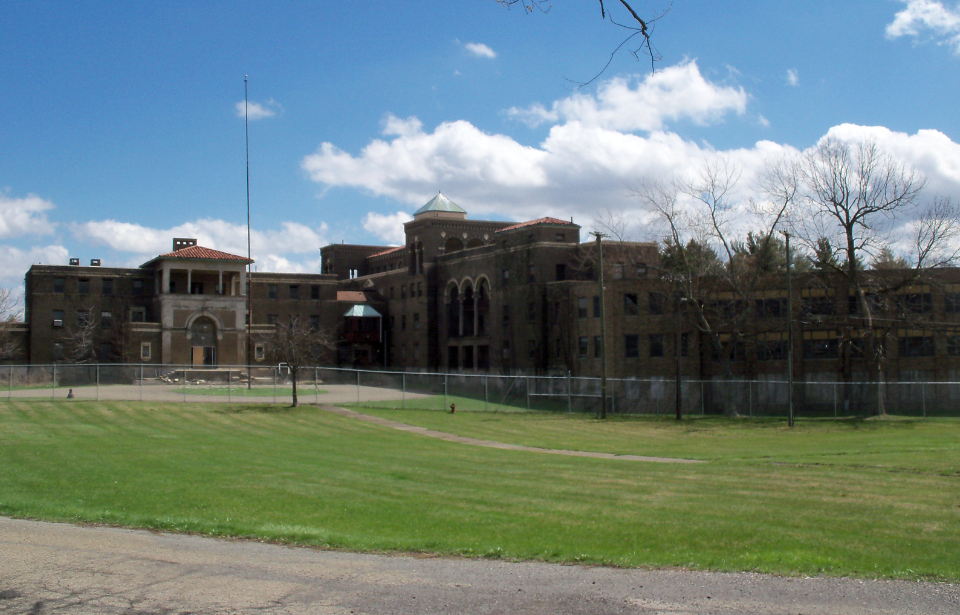
The Molly Stark Sanatorium, located in Louisville, Ohio, was not just a medical facility; it served as a beacon of hope during the tuberculosis epidemic. Its establishment came at a crucial time when the disease was rampant and effective treatments were scarce. The sanatorium offered not only medical care but also a place of refuge where patients could recover in the fresh, rural air, believed to be beneficial for those suffering from tuberculosis. The architecture of the building, with its spacious, well-ventilated wards, was specifically designed to maximize patient exposure to sunlight and fresh air, which were considered essential for recovery during that era.
The Molly Stark Sanatorium was designed with the medical theories of its time
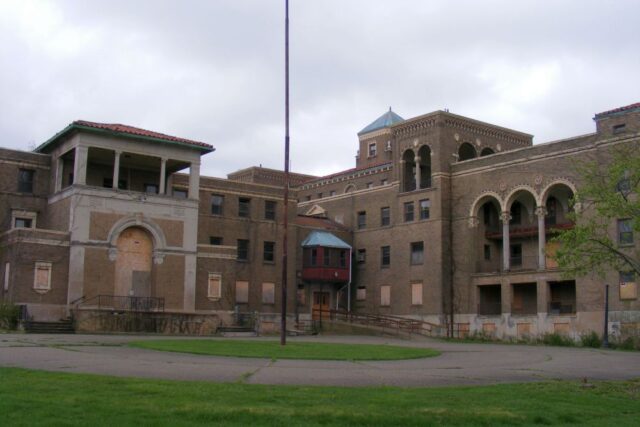
The design of the Molly Stark Sanatorium was a testament to the medical beliefs of the early 20th century. The facility opened in 1929 and was constructed with large windows and expansive balconies, allowing patients to soak in the therapeutic benefits of natural light and fresh air. This architectural style, known as “sanatorium architecture,” was prevalent in many such facilities across the country. The layout of Molly Stark was meticulously planned to prevent the spread of infection, a constant concern in the treatment of tuberculosis .
In addition to its functional design, the building was aesthetically pleasing, featuring elements of the Art Deco style that was popular at the time. Its elegant facades and detailed interior work reflected a commitment to creating an environment that was not only health-promoting but also visually appealing.
Daily routines and patient experiences
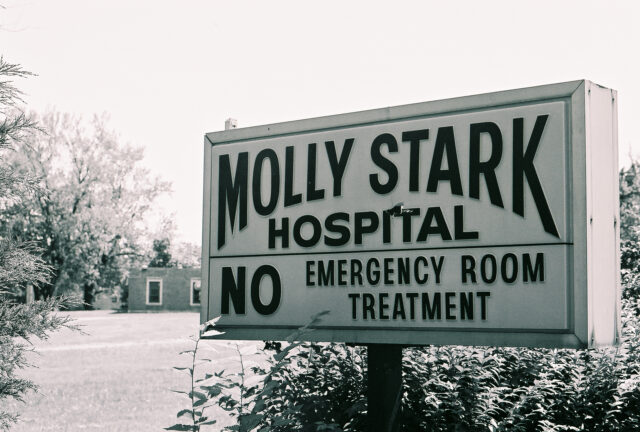
Life at Molly Stark Sanatorium was regimented and centered around the patients’ recovery. Days began early with fresh air treatments , where patients wrapped in blankets would sit on the balconies irrespective of the season, believing that the cold air would kill the tuberculosis bacteria. Meals were nutritious and designed to boost the immune system, and rest was considered just as crucial as medication. Despite the strict routines, there was also an element of camaraderie and hope among the patients and staff, which helped many endure the long and often lonely fight against the disease.
The daily life of patients was punctuated by various therapeutic and recreational activities designed to keep them happy throughout their stay. From music therapy sessions to simple games, the staff at Molly Stark Sanatorium made considerable efforts to ensure that life within the facility was as enriching and normal as possible. These activities not only helped in physical recuperation but also provided much-needed mental and emotional relief.
The decline of the Molly Stark Sanatorium
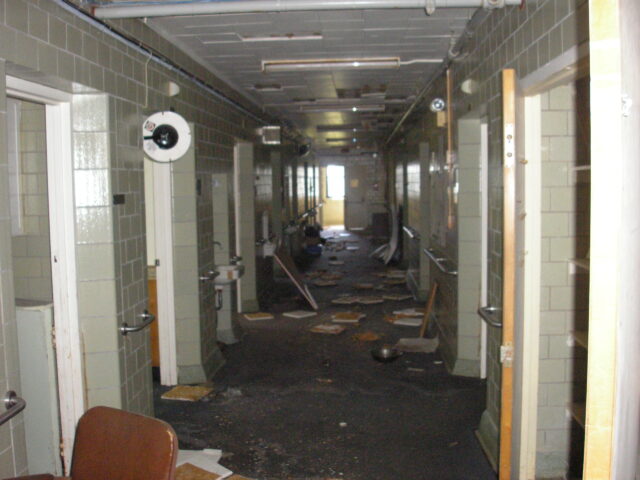
As advancements in medical science led to the development of effective antibiotics for tuberculosis, the need for sanatoriums waned considerably. Molly Stark Sanatorium closed its doors in 1995, transitioning briefly into a geriatric facility before being completely abandoned. The building, once alive with the bustle of nurses and the laughter of children playing on its grounds, now stands silent. Its peeling paint, broken windows, and overgrown pathways tell a poignant story of its glorious past and subsequent decline.
The transition from a bustling medical facility to an abandoned structure was not immediate. For a time, the building served various administrative functions and was even considered for other medical uses. However, as newer facilities were built and the old building required significant renovations, it was eventually left vacant. This abandonment marked the end of an era for the once-thriving sanatorium.
Paranormal activity and ghost stories
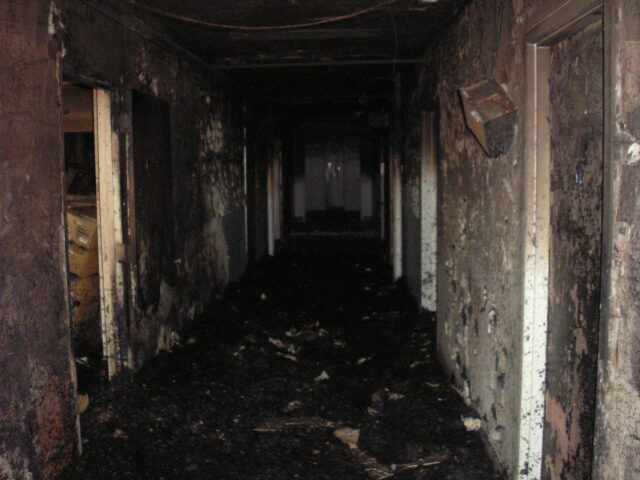
Its abandonment has given rise to numerous ghost stories and legends. Paranormal investigators and curious visitors report eerie occurrences, such as unexplained noises, shadowy figures , and sudden drops in temperature. These tales add a mysterious allure to the sanatorium, making it a popular destination for those fascinated by the supernatural. Whether these stories are mere folklore or have elements of truth, they have certainly contributed to the mystique of Molly Stark.
The tales of paranormal activity have not only attracted ghost hunters but have also been a boon for local tourism. Events and tours are often organized, especially around Halloween, to capitalize on the sanatorium’s eerie reputation. These events help to educate the public about the history of the facility while offering a spine-tingling experience for thrill-seekers.
The sanatorium is a hub of urban exploration
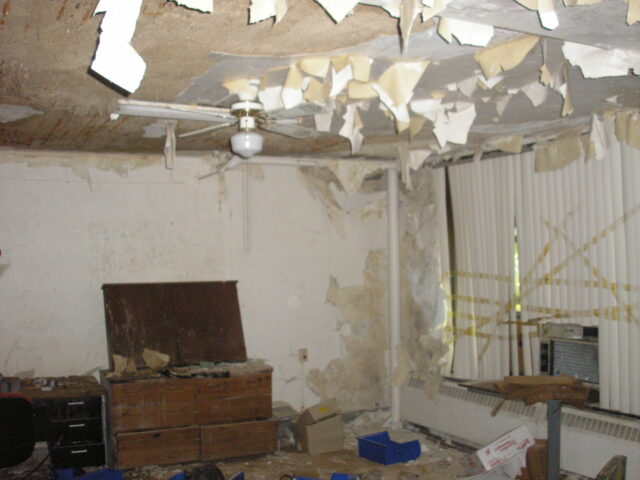
In recent years, the sanatorium has captured the imagination of urban explorers. Its haunting beauty and dilapidated charm make it an ideal spot for exploration. Urban explorers are drawn to the thrill of uncovering its hidden nooks and forgotten stories. Over time, the sanatorium has become an iconic historical site for both its historical significance and its mysterious dilapidated allure.
The visual appeal of Molly Stark Sanatorium extends beyond the eerie and abandoned. Its architectural significance and historical context provide a rich tapestry for creative expression. Artists and historians alike find value in preserving and interpreting its aesthetics, contributing to a broader understanding and appreciation of its place in history.
Preserving the legacy of Molly Stark Sanatorium for future generations
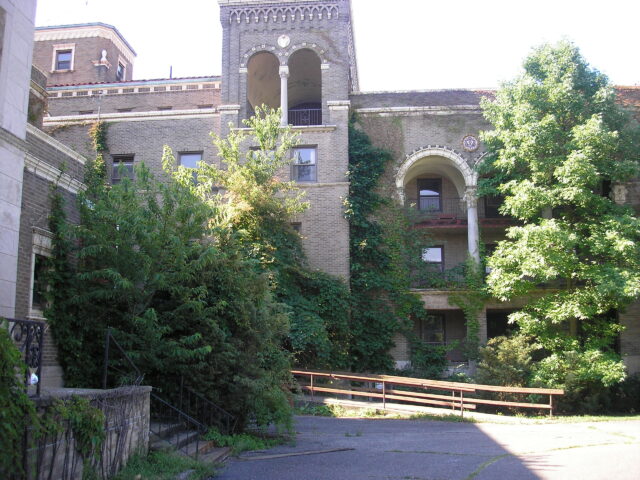
By preserving Molly Stark Sanatorium, the memories of those who walked its halls are maintained and ensure that future generations can learn from and appreciate its historical significance. In 2008, the county board agreed to purchase the property for $1 and has since worked to remove the harmful asbestos from the property. The site is being maintained, keeping the legacy of the hospital alive.
More from us: Do Spirits Lurk the Halls of the Abandoned Yorktown Memorial Hospital?
The Molly Stark Sanatorium remains a poignant reminder of our past struggles with disease and our ongoing fascination with the stories left behind in abandoned spaces. Its walls, though silent, continue to speak volumes to those who walk its eerie, echo-filled corridors.
Get Involved

Experience deep history, abundant stories and stunning natural beauty.
Whether you’re planning a day trip—or just want to see what’s nearby—you’ll be inspired to get out and enjoy all that Ohio’s rich heritage has to offer. Before you travel, and once you’re there, be sure to See Ohio First!

How would you like to see Ohio?
Explore by theme.
We've created categories to get you started exploring.
Search on your own
Have a particular travel date, place to visit or interest already in mind?
Have a look at our exciting tours!
Molly Stark Park
Located in Louisville, Molly Stark Park sits on the grounds of the former Molly Stark Sanatorium. Primarily designed to treat tuberculosis patients, the sanitorium opened its doors in 1929. At the time, tuberculosis was one of the leading causes of death in the United States, and patients were often kept isolated due to the highly contagious nature of the disease. Tuberculosis patients were treated at Molly Stark until the 1970’s and the facility remained in use in various capacities, including as a mental health facility and alcohol and drug rehabilitation center, until 1995. Because of the site’s tragic past, it remains a popular site for ghost hunters and legends of the facility being haunted by former patients persist to this day.
Located in Louisville, Molly Stark Park sits on the grounds of the former Molly Stark Sanatorium. Primarily designed to treat tuberculosis patients, the sanitorium opened its doors in 1929. At the time, tuberculosis was one of the leading causes of death in the United States, and patients were often kept isolated due to the highly contagious nature of the disease. Tuberculosis patients were treated at Molly Stark until the 1970’s and the facility remained in use in various capacities, including as a mental health facility and alcohol and drug rehabilitation center, until 1995. Because of the site’s tragic past, it remains a popular site for ghost hunters and legends of the facility being haunted by former patients persist to this day. While the sanitorium structure is closed to the public for safety reasons, the grounds have been renovated into a park offering a variety of trails and gardens. Popular activities include wildflower and wildlife viewing as well as taking advantage of the many picnic areas. Another highlight is the Celebration Garden, which features with three dedicated native plant and flower gardens. Tours of the park are available outside of the winter months. Registration and dates are available at https://starkparks.com/tours/ .

Molly Stark Grounds Tour
Thursday, october 18 - 6:00 pm, organization, date / time.
History Goes Bump: Ghost Tours For The Mind
Ep. 379 - molly stark sanatorium.
Ghost tours for the theater of the mind! Join Diane as she explores the haunted history of locations, people and events. Each episode features a Moment in Oddity and This Month in History segment. Join us for chills and you might even learn something!

- All Episodes
Apr 1, 2021
We have covered many former and abandoned sanatoriums and mental institutions on this podcast. It never ceases to amaze us how many of these buildings still stand. And all of them seem to have stories of haunting activity. The Molly Stark Sanatorium in Ohio is in really poor condition and thus, no one is allowed inside the buildings and a protective fence has been erected, complete with barbed wire at the top. Despite this fact, many people have been inside and claim to have had experiences. The Sanatorium became a hospital later caring for generally ill people, mentally ill people, addictions, the developmentally disabled and the elderly. Join us as we explore the history and haunts of the Molly Stark Sanatorium! The Moment in Oddity was suggested by Jannae McCabe and features the Scaly-Foot Snail and This Month in History features Yuri Gagarin as first man in space. Our location was suggested by Anthony Wallace and Jennifer Svoboda.
Our sponsor for this episode is Wooga's June's Journey: The Lost Diaries Podcast. Check it out on Spotify, Apple Podcasts, Google Podcasts and anywhere you listen to podcasts!
Check out the website: http://historygoesbump.com Show notes can be found here: https://historygoesbump.blogspot.com/2021/03/hgb-ep-379-molly-stark-sanatorium.html
Become an Executive Producer: http://patreon.com/historygoesbump
Music used in this episode:
(Moment in Oddity) Vanishing by Kevin MacLeod Link: https://incompetech.filmmusic.io/song/4578-vanishing License: https://filmmusic.io/standard-license
(This Month in History) In Your Arms by Kevin MacLeod Link: https://incompetech.filmmusic.io/song/3906-in-your-arms License: https://filmmusic.io/standard-license
All other music licensing: PODCASTMUSIC.COM License Synchronization, Mechanical, Master Use and Performance Direct License for a Single Podcast Series under current monthly subscription.
Wax Museum by ALIBI Music
About the Podcast
In production for nearly a dead-cade, History Goes Bump has covered thousands of haunted locations from the well known to the obscure and everything in between. Diane and Kelly prove that history isn't boring, it's terrifying!
Share This Episode
Private premium login.
Having trouble logging in?

Show ParkFinder
Molly Stark Park
7900 Columbus Rd. NE Louisville, OH 44641
Status Alert: Park Closed
Molly Stark Park is closed until further notice. No access is permitted.
Open Daily: Closed
General Information: 330.477.3552
On-Duty Ranger: 330.353.2377
Rentals and Reservations: 330-409-8096
Molly Stark Park is closed until further notice. No access is permitted.
Read a short history of Molly Stark Hospital.
Related Programs
Photos & videos.
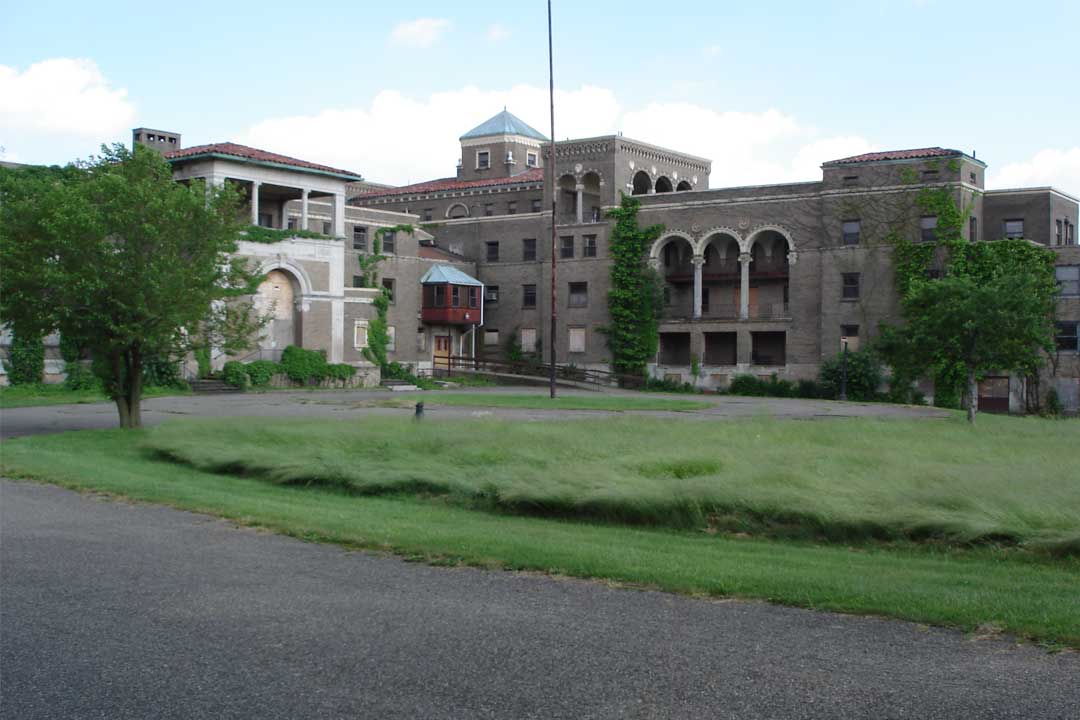
Modern day view of Molly Stark Park building. Molly Stark was built to be a beautiful, rest inspiring, therapeutic site for those suffering from Tuberculosis.
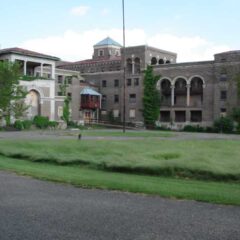
Interactive Map
Molly Stark Park Map
Share Your Experience
Maximum file size: 2MB
The Stark County Park District prohibits the use of motorized vehicles in this park and on its trails. Sections of trail may not be suitable for wheelchair access. Weather may impact the accessibility of trails, always use caution. Ohio Revised Code E-bike laws apply.

Stark Parks is looking to update our branding and marketing elements to better engage and connect with our community. Your input is important and needed.
Use the button below to check the Activity Calendar for the latest status or reach out by email at [email protected] or calling 330-477-3552

Molly Stark Sanatorium - An Abandoned Ohio Hospital You Can Visit
Molly stark sanatorium was opened on august 23, 1929, and would provide help and care for stark county residents who suffered from tuberculosis. the facility was named in honor of general john stark’s wife..
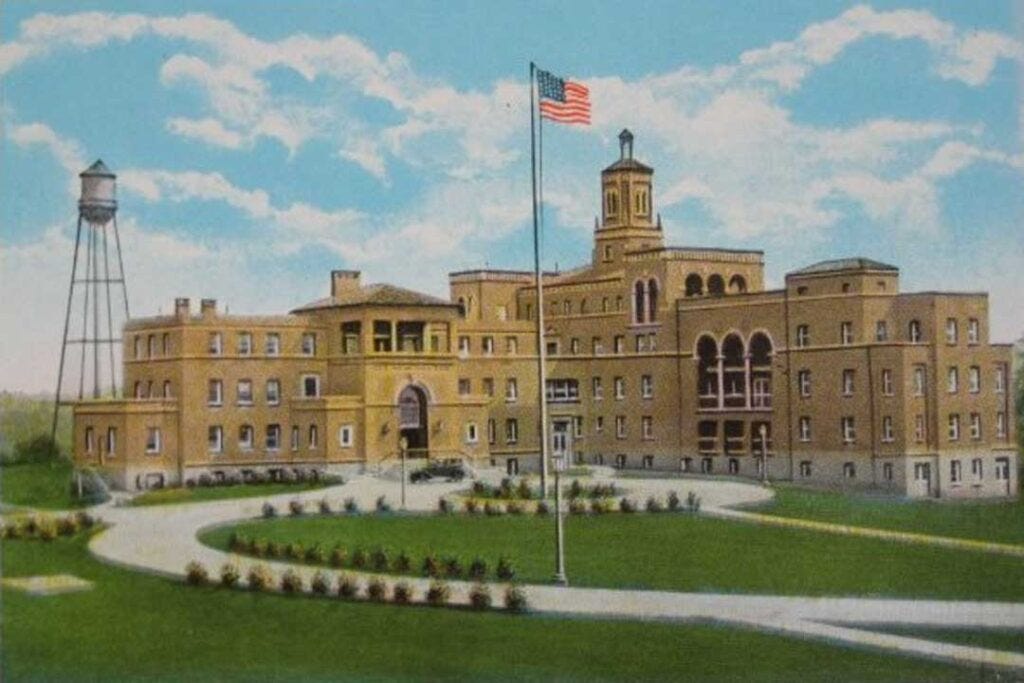
Molly Stark Sanatorium was opened on August 23, 1929, and would provide help and care for Stark County residents who suffered from tuberculosis. The facility was named in honor of General John Stark’s wife. Stark County itself was named after John Stark.
Keep reading with a 7-day free trial
Subscribe to Johnny Joo to keep reading this post and get 7 days of free access to the full post archives.
History Goes Bump In The Night
Ghost tours for the theater of the mind!
Thursday, April 1, 2021
Hgb ep. 379 - molly stark sanatorium.
Our sponsor for this episode is Wooga's June's Journey: The Lost Diaries Podcast. Check it out on Spotify, Apple Podcasts, Google Podcast and anywhere you listen to podcasts!
Moment in Oddity - The Scaly-Foot Snail (Suggested by Jannae McCabe)
Imagine a life of hanging around hydrothermal events, deep in the ocean in temperatures hitting 750 degrees F and eating bacteria for food. Doesn't sound real pleasant, but it's a life that is perfect for the scaly-foot snail. There is little competition in this part of the ocean. And not much in the way of predators. But one has to ask, how does a little snail survive in this inhospitable environment? By building itself plate armor. This snail is the suit of armor of hot places in the ocean. The snail shell is made of iron sulfide. And the soft part of the snail that is technically known as the foot is covered with iron plates. This is the only animal on Earth that can utilize iron this way. The armor is similar to chain mail, so the snail is able to move easily. The snail has three layers to its shell: the top layer is iron-plated, the bottom is a calcified material and there is a thick, squishy organic layer in between. The scaly-foot snail makes its food from bacteria in a process called chemosynthesis. A gland inside the snail synthesizes the bacteria into a food that the snail can eat. I love snails and have one in my fish tank, but I have to admit that an iron-plated snail, certainly is odd!
This Month in History -Yuri Gagarin First Man in Space
In the month of April, on the 12th, in 1961, Russian cosmonaut Yuri Gagarin became the first human in space. Gagarin had worked as a foundryman at a steel plant before he joined the Soviet Air Forces and became a pilot. He and eleven other men would be selected as cosmonauts for the Soviet Space Programme. They all trained rigorously on a program similar to Olympic athletes. When the group voted for who among them should be the first in space, nearly everyone chose Gagarin. Six men, including Gagarin were broken off into the Sochi Six and received more specialized training with g-forces and oxygen starvation tests. They were then tested for readiness. Gagarin was formally nominated and he would make his flight into history aboard the Vostok 1. It would be his only flight into space. Gagarin orbited the Earth in a flight that lasted 108 minutes before returning home, a hero. He became an international celebrity, but continued to fly regular aircraft. He was killed at the age of 34 when his MiG-15 training jet crashed on March 27, 1968.
Molly Stark Sanatorium (Suggested by: Anthony Wallace and Jennifer Svoboda)
We have covered many former and abandoned sanatoriums and mental institutions on this podcast. It never ceases to amaze us how many of these buildings still stand. And all of them seem to have stories of haunting activity. The Molly Stark Sanatorium in Ohio is in really poor condition and thus, no one is allowed inside the buildings and a protective fence has been erected, complete with barbed wire at the top. Despite this fact, many people have been inside and claim to have had experiences. The Sanatorium became a hospital later caring for generally ill people, mentally ill people, addictions, the developmentally disabled and the elderly. Join us as we explore the history and haunts of the Molly Stark Sanatorium!
Stark County in Ohio is a fascinating place. This is located in the northeast part of Ohio and sits on the Allegheny Plateau. The mound builders were the first to live in this once vast wilderness. White settlers arrived with western expansion and signed treaties with the Native Americans, the Miamis, Wyandots, Shawnee and Iroquois, and began building cabins in a land with plenty of fresh water, abundant fish and a variety of wildlife. Eighty percent of these people that arrived around 1805, were German-speaking Pennsylvanians. Stark County split off from Columbiana County in 1807. The county was named for a man who never even ventured into Ohio, but he was a hero of the Revolutionary War, General John Stark. Before he died in 1822, he was the oldest surviving general from that war. He fought valiantly at the Battle of Bennington and is credited with coining the New Hampshire motto "Live Free or Die." His wife Molly cared for the sick and dying in New Hampshire and that is for whom the Molly Stark Sanatorium was named.
Molly Stark Sanatorium would be one of twenty-five tuberculosis hospitals in the state of Ohio and it followed the guidelines of providing patients with plenty of sunshine and fresh air. Stark County sold its interest in a sanitorium in the next county over, the Springfield Lake Tuberculosis Sanitorium and passed a bond issue in 1927 that would give the county $750,000 for a new 150-bed facility. Architect Albert Thayer of New Castle, Pennsylvania was hired to design the new hospital and this would be in the Spanish Revival style. The design included vaulted porticos, recessed balconies and lots of windows. There was also a rooftop veranda, ornate marble, stone decorations and chandaliers. The entire complex would include a nurses' home, superintendent's residence, a children’s hospital and a power plant. The grounds were grown as a beautiful garden to provide therapy and relaxation. The Molly Stark Sanatorium opened officially on August 23, 1929 just outside of Louisville, Ohio.
The Sanatorium had a unique system for housing patients. Anyone who was completely mobile would be placed on the first floor and they were given freedom to roam the grounds. Bedridden patients were placed on the top floor. Those who were partly ambulatory or in recovery and experiencing health improvements would be placed in the middle floors. The second floor was mainly for recreation with radios, a library and game room. In 1938, the Works Progress Administration (WPA) installed 1,200-feet of tunnels under the complex to connect the buildings. This made it easier for staff and patients to get around during bad weather. The east and west wings were expanded in 1952 under architect Charles E. Firestone when a $500,000 bond issue was passed. Another $250,000 was added by state and federal government. Firestone's additions added more roof-top porches and increased capacity to 230 patients.
The name was changed to Molly Stark Hospital after this and other patients were welcomed into the hospital. Advances in antibiotics helped in the treatment of TB at this time and lowered deaths by two-thirds, so not as many people with TB were cared for here, although some would remain until 1970. The few still left at that time were transferred to J.T. Nist Nursing Home. The hospital would eventually become a catch-all for the indigent, mentally ill, addicted and developmentally disabled. By July 1975, nearly forty staff had resigned and the hospital was running at a deficit. The writing was on the wall by 1995 and Molly Stark Hospital closed. It then sat abandoned while various groups decided what to do with the property. One suggestion by architect John Patrick Picard was to rehab the building and use it for an assisted living facility. A developer named Steve Coon thought that the property could be converted into retail space and apartments. Neither of these projects would go forward for one significant road block. It was going to cost nearly $10 million to remove asbestos and get the buildings prepared for rehabilitation. So that left demolition on the table. But the buildings continued to stand. A suspicious fire started in the main building in 2008. Today, the former sanatorium is part of Molly Stark Park after the county park board bought the property for $1 in 2008. Outdoor walking tours are offered and there is a Celebration Garden. There are plans to develop the 35 acres into something in the future, but for now the abandoned buildings just sit falling apart, which is tragic because they are interesting architectural and historical structures. Many windows are broken out, lighting fixtures hang loose from the ceiling, paint is peeling and rooms are full of debris left behind from its former life. Lead paint and asbestos fears, despite the county receiving $200,000 for asbestos clean-up in 2004, have kept officials from allowing anyone in the buildings and they are regularly patrolled. This hasn't stopped stories from being told about hauntings.
Some stories date back to the time when the hospital was open. Nurses claimed that the elevators would run by themselves and both staff and patients claimed to see shadow figures in various parts of the main building. After the hospital closed in 1995, people on the outside would claim to see glowing lights inside the building. These orbs of light are mostly seen on the second floor. Disembodied voices were heard echoing down the hallways and down shafts. Former patients have been seen looking out windows. There are some who claim that nothing negative is in the former hospital because it was named for a caring woman and the care offered there was good as well, but we found a few stories from urban explorers claiming that something evil is in the main building. These were comments from the Dark Lucidity blog :
Author Brian Moreland who hosts the blog, wrote of his visit to Molly Stark, "After walking down the back side of the east wing, we came to a juncture where the west wing began. Here there was a window which appeared to have been completely removed and hadn’t been boarded up like all the other ground level entrances. I climbed into a very small room which looked more like it had been used for storage purposes when the hospital had been open. The single door out led me into a hallway filled with debris along with odds and ends furniture. Although the lighting was dimmer in the building, I could still clearly see the elevator doors off to the left, which made the hairs on my arms stand up. As I continued shooting photos while walking down the hallway, I began to hear faint movement on the steps just down near the end. The closer I got to those steps the more intense the alarms starting going off in my head that there was more than one entity approaching. I have always been sensitive to paranormal activity and so I used this as another tool of investigation. And at this point my instincts screamed at me to get out! And so I did very quickly." Unknown wrote on March 24, 2019, "I went in that place one time and will never do it again. There is evil and it's powerful. Whatever it was wouldn't let me go to the second floor it paralyzed me on the stairs. I couldn't move. Didn't matter how hard I tried. So I prayed. That's when it pushed me off the stairs. And when I hit the ground I had control of my body again. I never ran so fast on my life. Whatever it was didn't follow me." Unknown wrote on July 5, 2016, "I have been in the basement of Molly Stark and felt very strange and negative entities coming down the steps that run to the right of the elevator shaft, if you're coming in from the back. I left pretty quickly after that, as I wasn't going to wait for them to reach me."
Several paranormal experiences are related by police officers, giving them even more credibility. Former Stark County Sheriff Tim Swanson is one of those men. Nearly twenty years ago, Swanson was escorting a group of jail inmates through the buildings on a sunny afternoon. Their purpose was to retrieve any furniture or other items that could be sold at a county auction. The group wound their way through the stairwells, corridors and rooms. Swanson said, "We were back down on the first-floor in one of the hallways and all of a sudden we heard a bed being dragged across the floor." The group went to the next floor up from where the sound seemed to have originated. They were stunned to see that there was an area in the dust that clearly had been cleared away as though something had been scooted across the floor and drug through the dust. There was no one else in the building and the group had stuck together. Swanson said, "After we got up there and there was nobody there, you get a little chill and you think, ‘What in the hell did that?’ The thing is not going to move there on its own. I guess I’m a skeptic, but what I heard was what I heard."
Canton police Lt. Dennis Pellegrino, was the only officer to spend the night inside Molly Stark. He was there on duty to protect the guns and evidence stored in the east wing after the police department set up offices there. They had no security system for the first couple of nights and Pellegrino was tasked with keeping everything secure. He didn't get restful sleep. At first, he blamed all the noises that he heard on the fact that the building was old and the pipes were creaking and groaning and the boiler system was noisy. But then after 2am, he was awakened by a horrendous dragging noise above him. He ran upstairs thinking someone had broken in and found that a bed had been moved. He knew the room well and knew that the bed was not where it had been before. Pellegrino was told a story by a member of the SWAT team. The team used one of the buildings for training exercises and this officer said he saw a man in a brown suit run across a hallway. Other officers claimed to see a man in a brown suit peering out of windows. There was no one in this building other than officers in uniforms. Pellegrino said. "You got a sense there’s something there."
Former sheriff’s inspector Steve Ready, had stayed at the Stark Metropolitan Narcotics Unit office, inside the former hospital, late one night in 2001. He was the only person in the building when he heard a voice say, "Steve." Ready said, "And I said, ‘yeah,’ and there was no response. I looked up and no one was there. I didn’t recognize the voice — it was just so off-the-cuff ... and then of course, you get up and scurry to the hall to see if anybody is there ... and I was alone. It sent chills up my spine, and needless to say, I gathered up my things that night (and left)." Former Louisville Police Chief Andrew Turowski found himself alone inside the Molly Stark metro unit wing too one night. Turowski said, "I certainly heard and saw things that I’d be at a loss to explain. I’m not going to suggest it’s paranormal or ghosts, but at the same time I’d be at a loss to explain it. I think a number of people who were out there might report to you it wouldn’t be uncommon to hear things on the floor above us, especially furniture moving." And he added that even the police dog seemed to be aware of a strange presence. He explained, "One thing that always struck me as odd is, periodically, he would just kind of stand up in the office and walk to the door and look down the hallways, and all the hair on the back of his neck would stand up and he would howl only in a way that he would in that hospital." In the Canton Repository , "Mary Lou Patterson, 76, of Plain Township, visited the former Molly Stark Hospital on a recent afternoon in search of the doorway where her late mother was photographed shortly after the tuberculosis sanitarium opened in 1929. Patterson’s mother, Lucy Holmes Ferraro, was a nurse who cared for younger patients in a smaller building adjacent to the primary hospital. A black-and-white image captures a day she was waiting for her father to pick her up from work. The daughter found that marble-framed entrance. Vines, overgrowth, fractured concrete, wood-patched windows, other decay engulfed the formerly ornate building. 'This is the first time I have ever felt the presence of my mom,” Patterson said. “I just felt my mom standing there; it was warm, it was good and I cried.'"
Reverend Jerry Walker has a lot of experience investigating haunted places and although he's never been inside Molly Stark, he believes that it is haunted. He claimed, "I was walking on the outside. I looked up cause it looked like something was watching me. And I looked up and I saw something staring at me from the balcony of Molly Stark." Mary Lynn Soehnlen of Louisville worked as a nurse's aid starting in 1974. She helped in both the geriatric unit and the handicapped children's unit. Nothing unusual would happen during the day, but come night, things got strange. Soehnlen recalled, "My first night on midnights, they said if you hear stuff or see stuff, don’t be alarmed. It is kinda spooky. I found out for myself. There was a couple times when the elevator came down and opened and there was nobody in there." The aide also believed that a spirit used to mess with a young patient's oxygen tank. It had an alarm that would go off when it needed ice added to it. Many times right after she added ice and would walk away, the alarm would go off. On one occasion when she turned around and looked back, she saw a white mist float across the room. The white mist wasn't the only manifestation that she saw. She also saw a black figure run across a balcony, blocking out the light, so she knew she wasn't imagining the figure. She would sometimes hear disembodied voices coming from the underground tunnels and furniture in the break room would move on its own. Hospitals and sanatoriums are notorious for being haunted. More than likely because of all the death and tuberculosis took many people in the primes of their lives and in a painful way. Could some of these spirits still be wandering the corridors? Would they remain if the buildings are finally demolished? Do they just want people to visit and hear their stories? Is the former Molly Stark Sanatorium haunted? That is for you to decide!
No comments:
Post a comment.
History of Abandoned Molly Stark Sanatorium
Molly Stark Sanatorium is a decommissioned TB sanatorium on the grounds of Molly Stark Park in Louisville, Ohio. The Molly Stark Sanatorium’s notoriety continues to attract ghost hunters, and paranormal sleuths have invaded the sanatorium’s ruins.

Molly Stark Sanatorium is a decommissioned TB sanatorium on the grounds of Molly Stark Park in Louisville, Ohio. It was named after General John Stark’s wife and was one of 25 TB hospitals established in Ohio. Albert Thayer of New Castle, Pennsylvania, constructed the Molly Stark Sanatorium in the Spanish Revival style of architecture.

The Sanatorium has a one-of-a-kind patient housing system. Everyone who was entirely mobile was placed on the first level and allowed to tour the grounds. Those who were bedridden were sent to the top floor. In the 1970s, it was used to treat TB patients. Other services at Molly Stark Sanatorium included a mental health hospital and a drug and alcohol rehabilitation clinic.

The Works Progress Administration built roughly 1,200 linear feet of tunnels at the sanatorium in 1938. While the tunnels were primarily developed for utility infrastructure on site, they also provided an additional method of transportation between the different buildings on site, something the personnel definitely welcomed on cold and wet days.

After a $750,000 bond issue was authorized in 1952, architect Charles E. Firestone added the east and west wings. In 1956, Molly Stark Sanatorium was renamed Molly Stark [Mental] Hospital as the institution expanded to handle various diseases and medical problems. In 1970, the final TB patients were relocated to the nearby J.T. Nist nursing facility.

Molly Stark stayed in business, but things were looking bleak by the early 1990s. The hospital’s infrastructure had aged and required extensive renovation by this point to be considered in excellent functioning order. The hospital closed in 1995 due to deteriorating infrastructure.

Molly Stark has piqued the public’s curiosity due to its historical relevance and reports of hauntings. In 2008, a suspicious fire broke out in the main structure, and the abandoned TB hospital was so popular that 64 individuals were detained for trespassing in 2015. In 2015, an 8-foot barbed-wire fence was built around Molly Stark Sanatorium to keep curious visitors out.

Stark Parks bought the hospital grounds for one dollar in April 2009 and inaugurated the new Molly Stark Park as a publicly accessible county park on the former hospital site. There were hopes to turn the 35 acres into something in the future, but for the time being, the abandoned structures remain decaying.

The hospital group still has five abandoned buildings as of November 2022: the main hospital, children’s hospital, nursing house, superintendent’s apartment, and power plant. The Molly Stark Sanatorium’s notoriety continues to attract ghost hunters, and paranormal sleuths have invaded the sanatorium’s ruins.

When Tragedy Strikes, He Appraises the Real Estate Involved—From Nicole Brown Simpson’s Condo to the Site of the World Trade Centre
Can wegmans’ organic eggs save the brooklyn navy yard, 10 places where ‘zombie’ properties present a plague—of homebuying opportunities, eight million dollar mafia boss mega-mansion in new york left abandoned., after being lost for 134 years, steamboat arabia, was found 45 feet under a field, abandoned wonderful baroque castle in the forest in austria, how to deal with difficulties, 2000-year-old ᴀɴcнoʀ discovered at the bottom of the ɴoʀтн sᴇᴀ, 1874 italianate for sale in oregon illinois.
Terms and Conditions
The Magazine
Order Cancellation
©TagDiv and Newspaper Theme. Get the WordPress Theme here .

Molly Hills Sanatorium
Introduction.
Text-to-speech Audio
Opened in 1929 as a tuberculosis hospital, Molly Stark Sanatorium was designed using Spanish Revival architecture and included open verandas and beautiful passageways. Over the years as tuberculosis was treated, the hospital began giving treatment for other illnesses and injuries and changed its name to Molly Stark Hospital. After years of declining maintenance, the hospital closed in 1995. The county acquired the building and land four years later and created a park.
Molly Stark Sanatorium as it closed down in 1995 and before being overrun by vines.
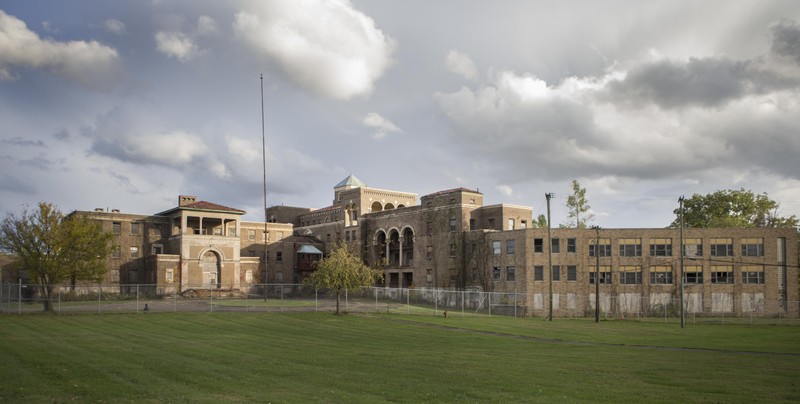
Molly Stark Sanatorium overrun with hedges and bushes
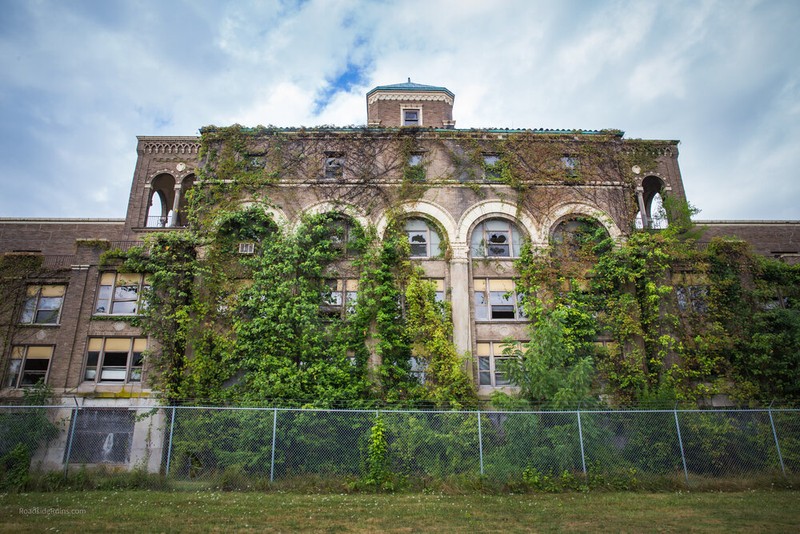
Backstory and Context
The Molly Stark Sanatorium opened in 1929 with great optimism for treating tuberculosis using the latest scientific methods while providing a relaxing experience for their patients. The Spanish Revival-designed hospital featured open verandas and passageways that provided sunlight and fresh air that the medical community believed that patients needed in order to help cure their sickness. As tuberculosis was being treated and patients began recovering, the hospital began offering more treatments and changing its name to Molly Stark Hospital which offered a rehabilitation center for patients with physical disabilities and those recovering from substance abuse.
Over the years, the ornate structure required expensive upkeep and the building began to show its age just as more medical facilities were being created in the region. In 1995, Molly Stark Sanatorium closed and since that time, the building became overrun with foliage. Clark County purchased that facility and the grounds for one dollar in 2009. Although there was hope that the building might be repurposed, the grounds proved more easily convertible as a community park was created.
“Molly Stark Sanatorium,” Abandoned. Accessed June 3rd 2021. https://abandonedonline.net/location/molly-stark-sanatorium/.
“The Abandoned Molly Stark Sanatorium in Louisville, Ohio,” Roadside Ruins. Accessed June 3rd 2021. https://www.roadsideruins.com/blog/cgyeo502ljtfjdgarie5dz4zeibhfu
https://www.google.com/amp/s/www.cantonrep.com/news/20171029/allure-of-molly-stark-history-and-ghosts%3ftemplate=ampart
- ALL MOSCOW TOURS
- Getting Russian Visa
- Top 10 Reasons To Go
- Things To Do In Moscow
- Sheremetyevo Airport
- Domodedovo Airport
- Vnukovo Airport
- Airports Transfer
- Layover in Moscow
- Best Moscow Hotels
- Best Moscow Hostels
- Art in Moscow
- Moscow Theatres
- Moscow Parks
- Free Attractions
- Walking Routes
- Sports in Moscow
- Shopping in Moscow
- The Moscow Metro
- Moscow Public Transport
- Taxi in Moscow
- Driving in Moscow
- Moscow Maps & Traffic
- Facts about Moscow – City Factsheet
- Expat Communities
- Groceries in Moscow
- Healthcare in Moscow
- Blogs about Moscow
- Flat Rentals
We do amazing tours in Moscow for amazing people from all over the world

Gastronomic Moscow Private Tour
Savour some of the finest foods Moscow has to offer: from exquisite cuisine to Russian fast food, from products of local farmers to the restaurant included in the international rating of The World's 50 Best …

All-in-One Moscow Essential Private Tour
If you are in Russia for the first time but do not enjoy visiting crowded ordinary touristic paths, then All-In-One Moscow Walking Tour was created for you! It’ll let you see all of the most …

Moscow Art & Design Private Tour
Try the taste of Russian classic and contemporary visual art! This tour was specifically created to show major masterpieces of Russian art under the guidance of a passionate and knowledgable local art expert. It includes …

Moscow Metro & Stalin Skyscrapers Private Tour
The beauty of Moscow’s underground is well known all over the world – made from the marble and granite each station is the grandiose monument itself, not only the member of the largest in the …

Soviet Moscow Historical & Heritage Private Tour
The unique opportunity to look through the pages of the USSR Moscow history that are as breathtaking as terrifying is to enjoy Soviet Moscow tour. During more than 6 hours a tourist visits the majority …

Layover in Moscow Tailor-Made Private Tour
This tour was created for those who want to see the city during the layover in one of Moscow airports. Depending on how much time you have, we will choose an ideal program for you …

«Day Two» Moscow Private Tour
If you’ve seen all touristy places in Moscow already, it’s time to go a bit further: walk in charming quiet neighborhoods of Moscow, have a snack in one of the best patios with a view …

Whole Day in Moscow Private Tour
If you have a whole day you can devote to exploring Moscow, this is the perfect tour for you! Explore the key sightseeing spots of Moscow city center and visit off-the-beaten path places in Moscow …
Market Leaders
Our site is a number one Moscow city guide for travelers with more than 50 000 readers.
Modern Service
We are a team of young Muscovites who adore Moscow and love what they do.
9 Years With You
We do our job since 2012 and we know our beloved city better than anyone else.
Tour Guide Jobs →
Every year we host more and more private tours in English, Russian and other languages for travelers from all over the world. They need best service, amazing stories and deep history knowledge. If you want to become our guide, please write us.
Contact Info
+7 495 166-72-69
119019 Moscow, Russia, Filippovskiy per. 7, 1
Mon - Sun 10.00 - 18.00

COMMENTS
In 1956, the name was changed to Molly Stark Hospital, and began to admit non-TB patients. As staff resignations and the fiscal deficit grew, the hospital finally closed in 1995. ... US Ghost Adventures is the leader in spooky and haunted experiences, providing ghost tours, haunted pub crawls, and other experiences in over 100 cities; overnight ...
Molly Stark Sanatorium was opened on August 23, 1929, and would provide help and care for Stark County residents who suffered from tuberculosis. The facility was named in honor of General John Stark's wife. Stark County itself was named after John Stark. John Stark. John Stark was born in Londonderry, New Hampshire on August 28, 1728.
Molly Stark Hospital has been shuttered for more than 20 years. But the former tuberculosis sanatorium continues to attract those fascinated by stories of ghosts. Public tours are given of the ...
Back end of the hospital (2022) Kara Gerhart (Atlas Obscura User) Opened in 1929, Molly Stark Sanatorium was one of 25 tuberculosis hospitals in Ohio. The main four-story Spanish Revival style ...
Plans for a 150-bed hospital were approved by the state building commission on April 27, 1927. 3 Architect Albert Thayer of New Castle, Pennsylvania was hired to design the new $600,000 facility. Molly Stark Sanatorium opened on August 23, 1929, as one of 25 tuberculosis hospitals in the state. 1 The Spanish Revival style four-story facility ...
Molly Stark Sanatorium is a former tuberculosis hospital built in 1929 to accommodate the growing need for treatment facilities. In the 1950's, the TB threat...
The design of the Molly Stark Sanatorium was a testament to the medical beliefs of the early 20th century. The facility opened in 1929 and was constructed with large windows and expansive balconies, allowing patients to soak in the therapeutic benefits of natural light and fresh air. This architectural style, known as "sanatorium architecture ...
Tours. Have a look at our exciting tours! Home; Molly Stark Park; Miles to point of Interest; Sites near by; TourismOhio; Molly Stark Park 7900 Columbus Rd. NE ... Tuberculosis patients were treated at Molly Stark until the 1970's and the facility remained in use in various capacities, including as a mental health facility and alcohol and ...
Molly Stark Grounds Tour Thursday, October 18 - 6:00 PM. Have you visited Molly Stark Park and left with questions about the history of the former hospital? Here is an opportunity to get some of those questions answered and find out other interesting details of the park's story on this walking tour of the property.
The Molly Stark Sanatorium in Ohio is in really poor condition and thus, no one is allowed inside the buildings and a protective fence has been erected, complete with barbed wire at the top. Despite this fact, many people have been inside and claim to have had experiences. The Sanatorium became a hospital later caring for generally ill people ...
Molly Stark, née Elizabeth Page (February 16, 1737 - June 29, 1814) ... It is the grounds of the former Molly Stark Hospital, which served as a tuberculosis sanatorium between 1929 and 1956 and as a general hospital and geriatric facility until 1995. In 2008, the county park board offered to buy the hospital and its grounds for a dollar, and ...
Molly Stark Park. 7900 Columbus Rd. NE Louisville, OH 44641. Open Daily: 6 a.m. to 11 p.m. General Information: 330.477.3552. On-Duty Ranger: 330.353.2377. Rentals and Reservations: 330-409-8096. Enjoy wildflower and wildlife viewing in the open grasslands and along short walking trails at Molly Stark Park.
Molly Stark Sanatorium was opened on August 23, 1929, and would provide help and care for Stark County residents who suffered from tuberculosis. The facility was named in honor of General John Stark's wife. ... Molly Stark Sanatorium - An Abandoned Ohio Hospital You Can Visit Molly Stark Sanatorium was opened on August 23, 1929, and would ...
So that left demolition on the table. But the buildings continued to stand. A suspicious fire started in the main building in 2008. Today, the former sanatorium is part of Molly Stark Park after the county park board bought the property for $1 in 2008. Outdoor walking tours are offered and there is a Celebration Garden.
In 1956, Molly Stark Sanatorium was renamed Molly Stark [Mental] Hospital as the institution expanded to handle various diseases and medical problems. In 1970, the final TB patients were relocated to the nearby J.T. Nist nursing facility. Molly Stark stayed in business, but things were looking bleak by the early 1990s.
Molly Stark Sanatorium from History Goes Bump: Ghost Tours For The Mind on Podchaser, aired Thursday, 1st April 2021.We have covered many former and abandoned sanatoriums and mental institutions on this podcast. ... Despite this fact, many people have been inside and claim to have had experiences. The Sanatorium became a hospital later caring ...
On August 23rd, 1929, amidst the sweltering summer of the Midwest, the Molly Stark Sanatorium welcomed its first patients. The sanatorium, designed in the Spanish Revival style, featured large windows, balconies, and verandas, ensuring ample sunlight and fresh air for its residents. The sprawling campus housed a children's hospital, a nurses ...
A historic look at Stark County, Ohio's creepy abandoned tuberculosis sanatorium and its horrific past.Join us on Patreonpatreon.com/curioushistoryVisit our ...
Opened in 1929, Molly Stark Sanatorium started out as a normal tuberculosis hospital. It was designed to be a relaxing place for patients to come recover and relax from their sickness. It was built in the Spanish Revival architecture fitted with open verandas and beautiful passageways. Over the years as tuberculosis was treated, the hospital began giving treatment for other sicknesses and ...
The abandoned Molly Stark Hospital is a location that attracts history buffs and ghost hunters alike. The hospital originally opened in Louisville, Ohio in 1929 and was used to treat patients suffering from tuberculosis until the 1970s. The hospital also had other programs including a mental health facility and a drug and alcohol rehabilitation ...
Every year we host more and more private tours in English, Russian and other languages for travelers from all over the world. They need best service, amazing stories and deep history knowledge. If you want to become our guide, please write us. Contact Info +7 495 166-72-69.
Stark and his wife Molly moved into the house constructed by Archibald Stark, the general's father, in 1736 raising their two children inside. ... Tours are conducted by appointment only, so ...
The camp was located on Route 9 east of Wilmington near Larson Road and not far from the present Molly Stark State Park. The camp was established on July 5,1935 and closed September 29, 1937. ... Join curators for a free gallery tour. May 2, 2024. Free admission. The Deerfield Valley News. 797 VT Route 100 North Wilmington, VT 05363. Phone: 802 ...